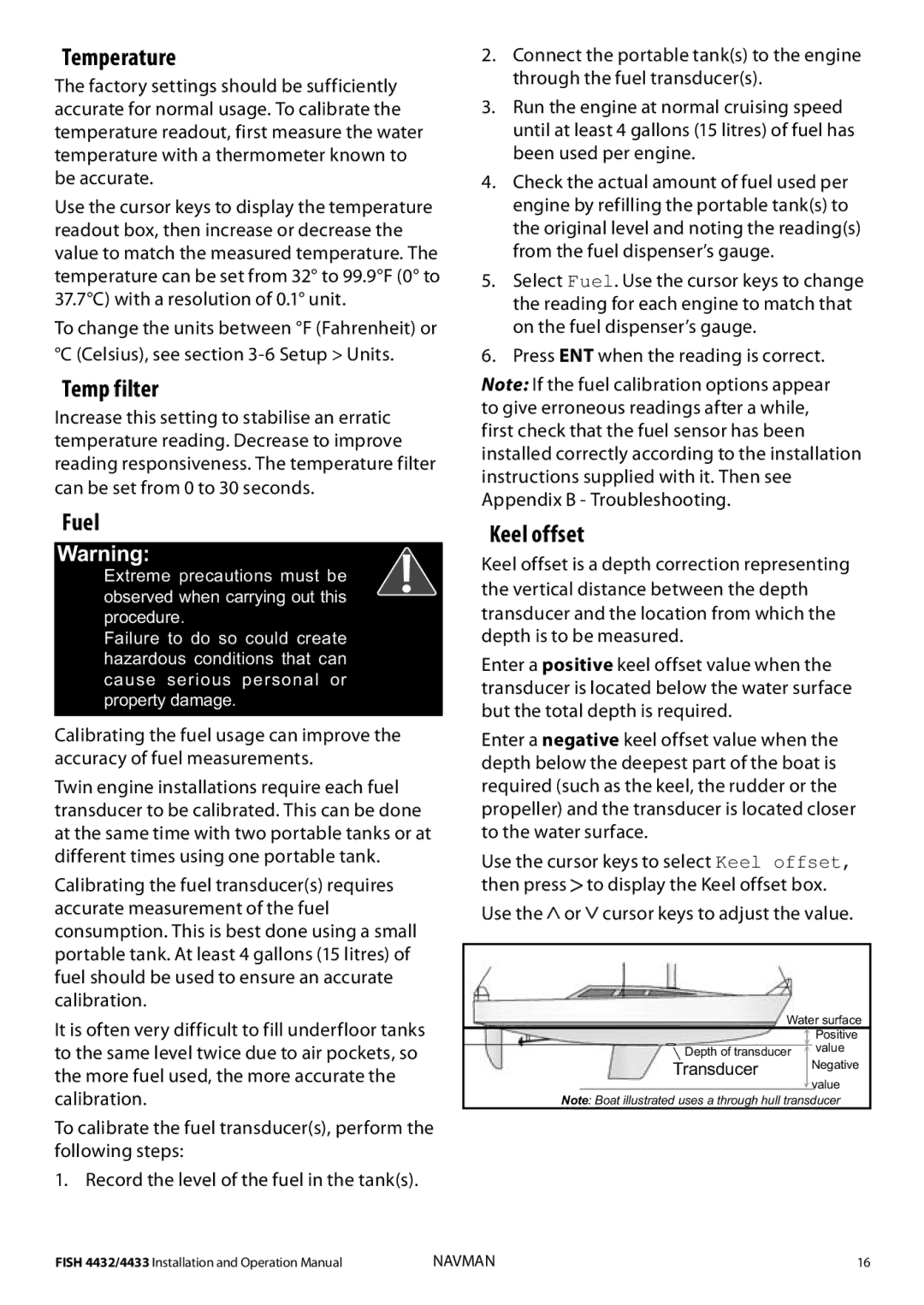
Temperature
The factory settings should be sufficiently accurate for normal usage. To calibrate the temperature readout, first measure the water temperature with a thermometer known to be accurate.
Use the cursor keys to display the temperature readout box, then increase or decrease the value to match the measured temperature. The temperature can be set from 32° to 99.9°F (0° to 37.7°C) with a resolution of 0.1° unit.
To change the units between °F (Fahrenheit) or °C (Celsius), see section
Temp filter
Increase this setting to stabilise an erratic temperature reading. Decrease to improve reading responsiveness. The temperature filter can be set from 0 to 30 seconds.
Fuel
Warning:
Extreme precautions must be observed when carrying out this procedure.
Failure to do so could create hazardous conditions that can cause serious personal or property damage.
Calibrating the fuel usage can improve the accuracy of fuel measurements.
Twin engine installations require each fuel transducer to be calibrated. This can be done at the same time with two portable tanks or at different times using one portable tank.
Calibrating the fuel transducer(s) requires accurate measurement of the fuel consumption. This is best done using a small portable tank. At least 4 gallons (15 litres) of fuel should be used to ensure an accurate calibration.
It is often very difficult to fill underfloor tanks to the same level twice due to air pockets, so the more fuel used, the more accurate the calibration.
To calibrate the fuel transducer(s), perform the following steps:
1. Record the level of the fuel in the tank(s).
2.Connect the portable tank(s) to the engine through the fuel transducer(s).
3.Run the engine at normal cruising speed until at least 4 gallons (15 litres) of fuel has been used per engine.
4.Check the actual amount of fuel used per engine by refilling the portable tank(s) to the original level and noting the reading(s) from the fuel dispenser’s gauge.
5.Select Fuel. Use the cursor keys to change the reading for each engine to match that on the fuel dispenser’s gauge.
6.Press ENT when the reading is correct.
Note: If the fuel calibration options appear to give erroneous readings after a while, first check that the fuel sensor has been installed correctly according to the installation instructions supplied with it. Then see Appendix B - Troubleshooting.
Keel offset
Keel offset is a depth correction representing the vertical distance between the depth transducer and the location from which the depth is to be measured.
Enter a positive keel offset value when the transducer is located below the water surface but the total depth is required.
Enter a negative keel offset value when the depth below the deepest part of the boat is required (such as the keel, the rudder or the propeller) and the transducer is located closer to the water surface.
Use the cursor keys to select Keel offset, then press ![]() to display the Keel offset box.
to display the Keel offset box.
Use the | or | cursor keys to adjust the value. | |
|
| Water surface | |
|
|
| Positive |
|
| Depth of transducer | value |
|
| Transducer | Negative |
|
|
| value |
| Note: Boat illustrated uses a through hull transducer | ||
FISH 4432/4433 Installation and Operation Manual | NAVMAN | 16 |
